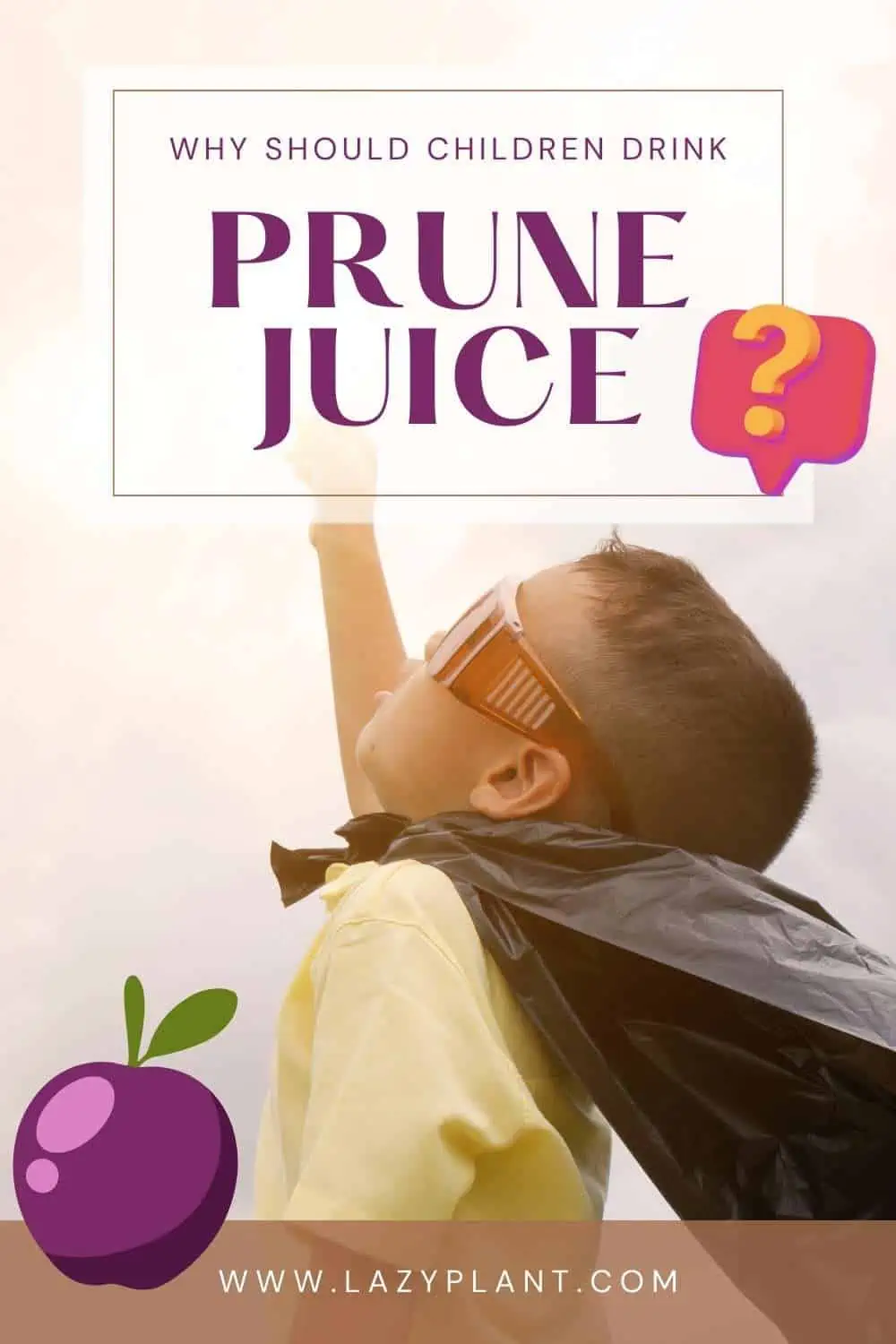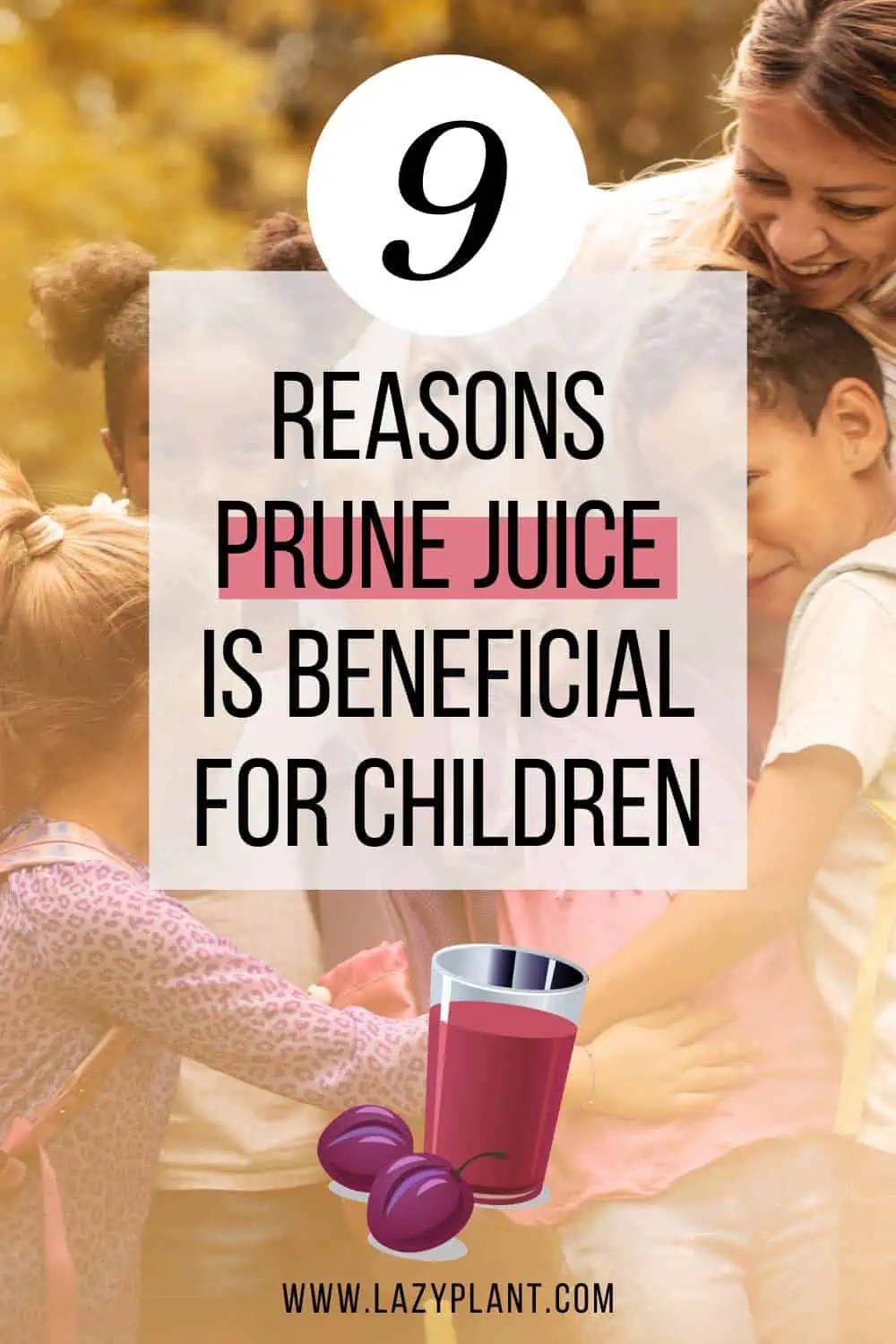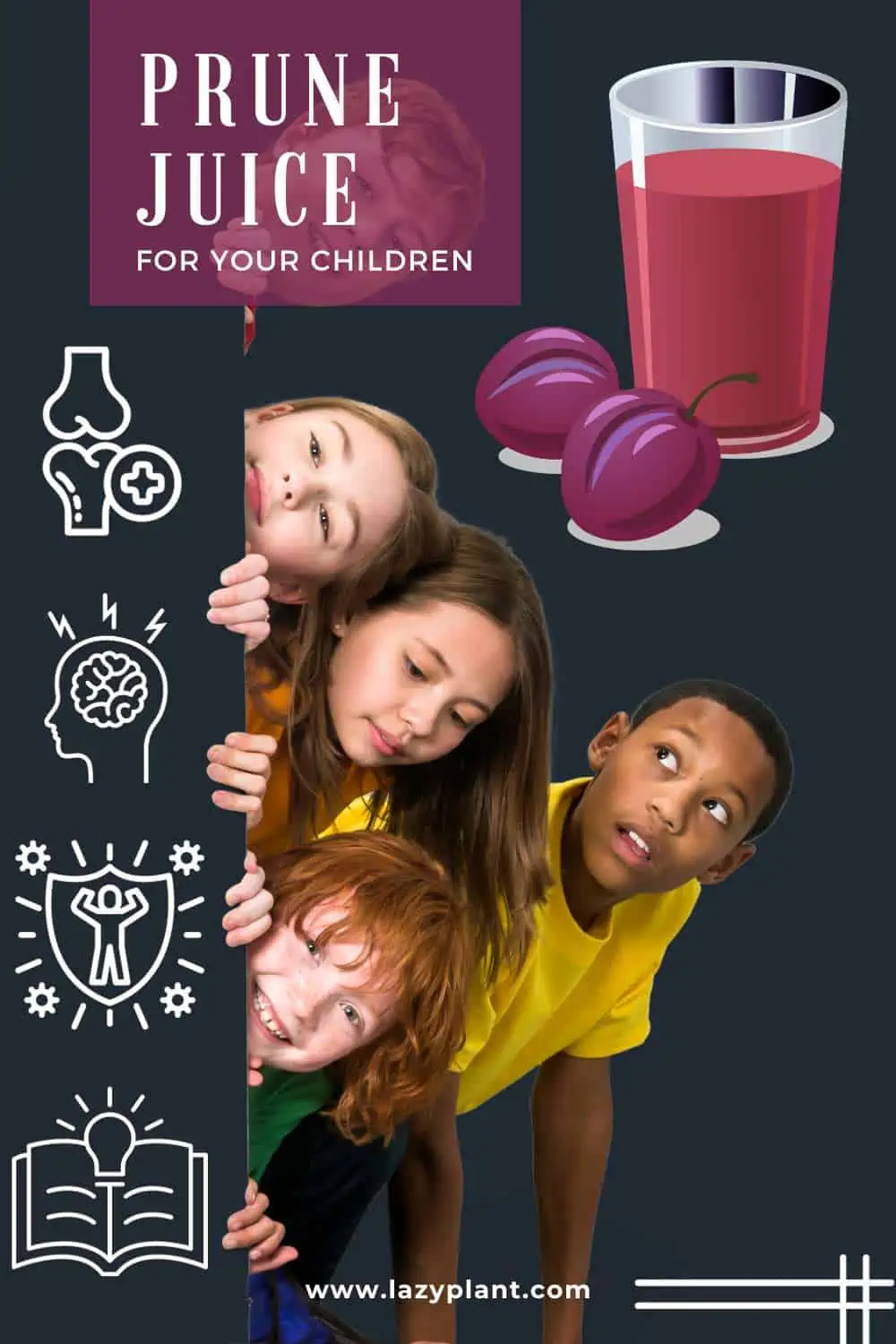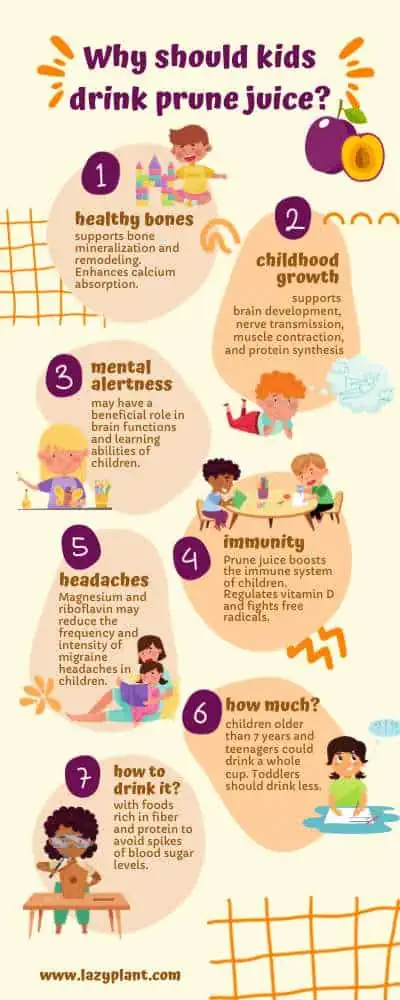Prune juice is the ultimate beverage for your family. It’s packed with compounds that are involved in your child’s growth, energy levels, immune functions, bone and teeth health, mood, learning abilities, and many more!
Supports bone health
Above all, kids should regularly drink prune juice or eat prunes for proper development of the bone.
Boron
Prune juice is the richest food in boron, containing 1.43 mg per cup. Most people consume significantly less boron in a day from their diet.
Boron is essential for the formation of bone. In fact, high amounts are stored in the bone. Also, boron manages calcium and vitamin D metabolism! A diet low in boron could have detrimental effects on bone mineral density.[1]
The main dietary sources of boron for toddlers and adolescents are cow’s milk and dairy products. But, these have low concentrations of boron. Cow’s milk has only 0.33 mg of boron per liter.
Fruits and legumes are the richest foods in boron. Besides prunes, avocados, raisins, peaches, apples, pears, and peanut butter are excellent natural sources of boron.
Vitamin K
In addition, prunes support bone health, due to their high vitamin K content.
A typical 5-prune serving provides 25% of the Daily Value of vitamin K, while a cup of prune juice provides 7% of the DV.
Vitamin K is crucial for bone mineralization and remodeling. High quantities are stored in bone.
Among other benefits, vitamin K enhances calcium absorption.
Prune juice contains some calcium as well. A cup provides about 3% of the DV.
Manganese
Furthermore, prune juice enhances bone growth in children because it’s particularly rich in manganese. A cup provides 16% of the DV.
Manganese also enhances bone formation. In fact, between 25% to 40% of manganese in the body is in bone. Acute manganese deficiency may impair bone formation and reduce bone mineral density.
Phosphorus
Phosphorus is a key component of bones and teeth as well. In fact, phosphorus and calcium make up hydroxyapatite, the main structural component in bones and tooth enamel.
A cup of prune juice provides 9% of the DV.
Of the total amount of stored phosphorus in the body, 85% is in bones and teeth,
Keep in mind that vitamin D regulates the metabolism of phosphorus. But many children as well as parents have low levels of this crucial vitamin. As there aren’t many foods rich in vitamin D, occasional supplementation may be beneficial for your family.
You can find children’s multivitamins with vitamin D on iHerb.
Supports normal childhood growth
Prune juice contains numerous nutrients that promote your child’s healthy development, including potassium, magnesium, copper, and iron.
Potassium
Potassium is a crucial mineral for your child’s development. It’s present in all body tissues. Moreover, it’s required for proper nerve transmission, muscle contraction, and kidney function. A cup of prune juice provides 20% of the DV, while a 5-prune serving provides 11% of the DV.
Magnesium
Magnesium (8% DV) in prune juice plays a role in the synthesis of DNA and RNA. Also, it’s a cofactor in more than 300 enzymes that are implicated in protein synthesis, muscle and nerve function, normal heart rhythm, as well as blood glucose regulation.

Copper
Prune juice is an excellent source of copper as well, containing 18% of the DV per cup.
Copper is involved in many physiologic processes, such as brain development, regulation of gene expression, and synthesis of various hormones and connective tissue. Also, copper is necessary for energy production and iron metabolism.
Most copper in the body is stored in the skeleton and muscle.
The richest sources include seeds and nuts, wheat-bran cereals, whole-grain products, and chocolate!
Iron
Another key reason why kids and teenagers should drink prune juice is its high iron status. A cup provides 16% of the DV.
Iron is necessary for physical growth and neurological development, supports muscle metabolism and healthy connective tissue, helps transfer oxygen from the lungs to the tissues, and modulates the synthesis of various hormones.
Pregnant women have extremely high needs for iron. Not only do they have to consume foods high in iron, like prunes, but also they should consume foods that enhance nonheme iron absorption, including meat, poultry or seafood, as well as foods rich in vitamin C.
Infants older than 4 to 6 months may require extra iron that is found only in infant formulas. Breast milk may contain insufficient amounts. Infants of 6 to 9 months can obtain adequate amounts of iron from solid foods.
Manganese
A cup of prune juice provides 16% of the DV.
Eating a wide variety of foods rich in manganese is good for the proper development of kids. In fact, manganese deficiency might cause bone demineralization and poor growth in children.
Many foods are rich in manganese, including whole grains, nuts, legumes, and leafy vegetables. Your child can skyrocket its manganese intake by eating hazelnuts. A handful of hazelnuts provides about 70% of the DV.
Phosphorus
Phosphorus is a component of DNA and RNA, cell membrane structure, and the body’s key energy source, ATP. Moreover, phosphorus is important for the regulation of gene transcription and the maintenance of normal pH.
Riboflavin
Riboflavin in prune juice (13% DV) plays a major role in cellular function, growth, and development. It’s implicated in the metabolism of fat and energy production.
The richest foods in this important B vitamin are eggs, meat, and milk. There are various plant-based foods with decent amounts of riboflavin as well. Grains and cereals are usually fortified with riboflavin.
Especially pregnant or lactating women who follow a plant-based diet should be very mindful of their riboflavin levels. Riboflavin deficiency can have adverse effects on the health of both mothers and infants.
Also, young vegetarian athletes are at a higher risk of being deficient in riboflavin, significantly affecting their health and physical performance.
Zinc
Last, but not least, prune juice could play a beneficial role in your child’s physical development because it contains decent amounts of zinc (5% DV).
Zinc supports healthy growth and development during pregnancy, infancy, childhood, and adolescence! Most of it is stored in skeletal muscle and bone.
Zinc deficiency can have detrimental effects on the health of kids. It can affect skin and bone health, as well as digestive, nervous, and immune systems!

Diarrhea and frequent infections can be signs of zinc deficiency in infants and children.
Moreover, chronic or acute zinc deficiency can impair growth in both infants and children. Additionally, when they reach adulthood, they may experience loss of appetite or other health problems.
Pregnant women should be very cautious with their zinc levels. Acute deficiency substantially increases the risk of adverse birth outcomes.
Although there are plenty of vegan foods high in zinc, meat, dairy products, and fortified cereal are the main dietary sources of zinc for children.
May improve mental alertness
Additionally, nutrients in prune juice may have a beneficial role in brain functions and learning abilities of children:
- boron deficiency might affect brain function by reducing mental alertness.
- iron deficiency anemia in infancy can lead to adverse cognitive and psychological effects, including delayed attention and social withdrawal.
- vitamin B6 plays a role in cognitive development. It’s involved in the biosynthesis of neurotransmitters.
Supports weight loss
Furthermore, consuming reasonable amounts of prune juice or prunes, as part of a healthy, well-balanced diet has huge benefits on weight loss. Prune juice helps the whole family maintain a lean body.
Childhood obesity is associated with a higher chance of obesity in adulthood.[3]
May relieve constipation
Moreover, prune juice has laxative effects. It may relieve mild constipation due to its high sorbitol and fiber content (9% DV). It promotes normal bowel movement.
Children have usually functional constipation without an organic cause. Stress and poor diet are common causes.[4]
Improves gut health
Additionally, prune juice may improve the gut health of children, teenagers, and parents! Especially if they follow a diet poor in fruits, vegetables, beans, or other fiber-rich foods.[5]
A healthy gut microbiota reduces the risk of obesity and boosts the immune responses of the body. It may even improve the mood and mitigate anxiety! The gut is linked to the brain.[6]
Raising kids with a healthy gut microbiota has huge benefits for the rest of their lives.
Improves immune function
Prune juice also boosts the immune system of children:
- boron supports immunity. Among others, it regulates the function of vitamin D.
- magnesium contributes to the synthesis of glutathione; one of the body’s most powerful antioxidant compounds.
- copper also plays a key role in the body’s defense against oxidative damage. For instance, it’s necessary for the synthesis of superoxide dismutases; another powerful antioxidant enzyme!
- manganese is a cofactor for many enzymes, including superoxide dismutase. It’s also important for the reactive oxygen species scavenging.
- zinc also plays a crucial role in immunity. It may even reduce the duration and severity of common cold symptoms.[7]
- polyphenols in prunes have potent antioxidant and anti-inflammatory properties as well.
Hydrates the body of kids
Additionally, prune juice hydrates the bodies of children, as it’s rich in essential electrolytes. We have to replenish both lost fluids and electrolytes.
Proper hydration is essential for physiological well-being and for cultivating long-term, health-conscious drinking practices.[8]
Prune juice is rich in potassium, phosphorus, magnesium while containing and small dosages of calcium.
May reduce the risk of migraine headaches
Furthermore, prune juice might relieve your kid from migraine headaches.
Firstly, it’s important to treat magnesium deficiency, as it’s a common cause of migraine headaches. Among others, magnesium modulates neurotransmitter release and helps widen blood vessels.
Riboflavin has beneficial effects on migraine headaches both in adults and children. High riboflavin intakes appear to reduce the frequency and intensity of migraine headaches in children.
How much prune juice can a child drink per day?
Prune juice is high in sugar. So, children should drink small amounts.
A cup has almost 40 grams of sugar.
According to the American Academy of Pediatrics, children shouldn’t consume more than 25 grams of added sugar per day. The sugar naturally occurring in fruit juices still counts as added sugar.[9]
Hence, children should even limit the consumption of unsweetened fruit juices. They could drink only small amounts, depending on their age:
| age | oz |
| infants | 0 |
| toddlers | 4 |
| preschoolers | 4-6 |
| school-age | 8 |
Hence, only children older than 7 years and teenagers could drink a whole cup (8 oz) of prune juice. Younger children should drink up to half a cup a day. They shouldn’t drink other fruit juices in this case.
Prune juice or prunes?
It’s always preferable to eat whole fruits instead of fruit juices. Even dried fruits have less sugar than fruit juices. So, if your kids like eating prunes, you should prefer them. A 5-prune serving has approximately 19 grams of sugar.

It’s a super healthy sweet
Drinking prune juice can satisfy your sweet tooth. It’s a super healthy sweet. Despite its high sugar content, prune juice doesn’t spike blood sugar levels. Due to its high fiber and antioxidant content, prune juice has a low glycemic index of around 43.
What’s the best time for kids to drink prune juice?
As prune juice provides steady levels of energy, one of the best times to drink it is in the morning. It will help your children have energy and stay focused in school.
Vitamin B6, niacin, manganese and copper, found in abundance in plum juice, play a crucial role in energy metabolism. They regulate amino acid and carbohydrate metabolism.
Moreover, as prune juice boosts the immune system, it shields your children’s eyes and skin from oxidative stress induced by air pollution and sun radiation.
Another great time of the day for your kid to drink prune juice is after exercising. It accelerates recovery and improves athletic performance.
How to drink prune juice?
Kids and parents should drink prune juice juice with a meal rich in fiber and protein in order to feel full for many hours.
For instance, your kids could drink prune juice with a peanut butter and jelly sandwich. It could be a healthy, filling meal that enhances weight loss.
Moreover, if your kid doesn’t like prune juice, you could combine it with other fruit juices. Obtaining a diverse range of antioxidants and vitamins offers significant health advantages.
For instance, grapefruit juice is one of the healthiest fruit juices for children, as it’s packed with vitamin C, various B vitamins, lycopene, and flavonoids!
In addition, you could add prune juice to smoothies or many recipes.
Snack ideas for prunes
Also, you incorporate prunes into the eating routine of your kids by adding them to breakfast oatmeal, trail mix, salads, smoothies, baked goods, or other recipes. You could use a sugar-free prune jam as well in order to prepare healthy desserts or sandwiches.
Can all kids consume prunes?
Parents should consult their pediatrician before giving prunes or prune juice to their children. Allergy to plums is very rare but possible.
Moreover, children with sensitive stomachs or those who have a low fiber intake should start with small amounts of prunes or prune juice and gradually increase their consumption.
Can babies drink prune juice?
As a rule of thumb, babies under 12 months shouldn’t drink prune juice or any other fruit juice. Always consult your pediatrician before giving new food to your baby.
